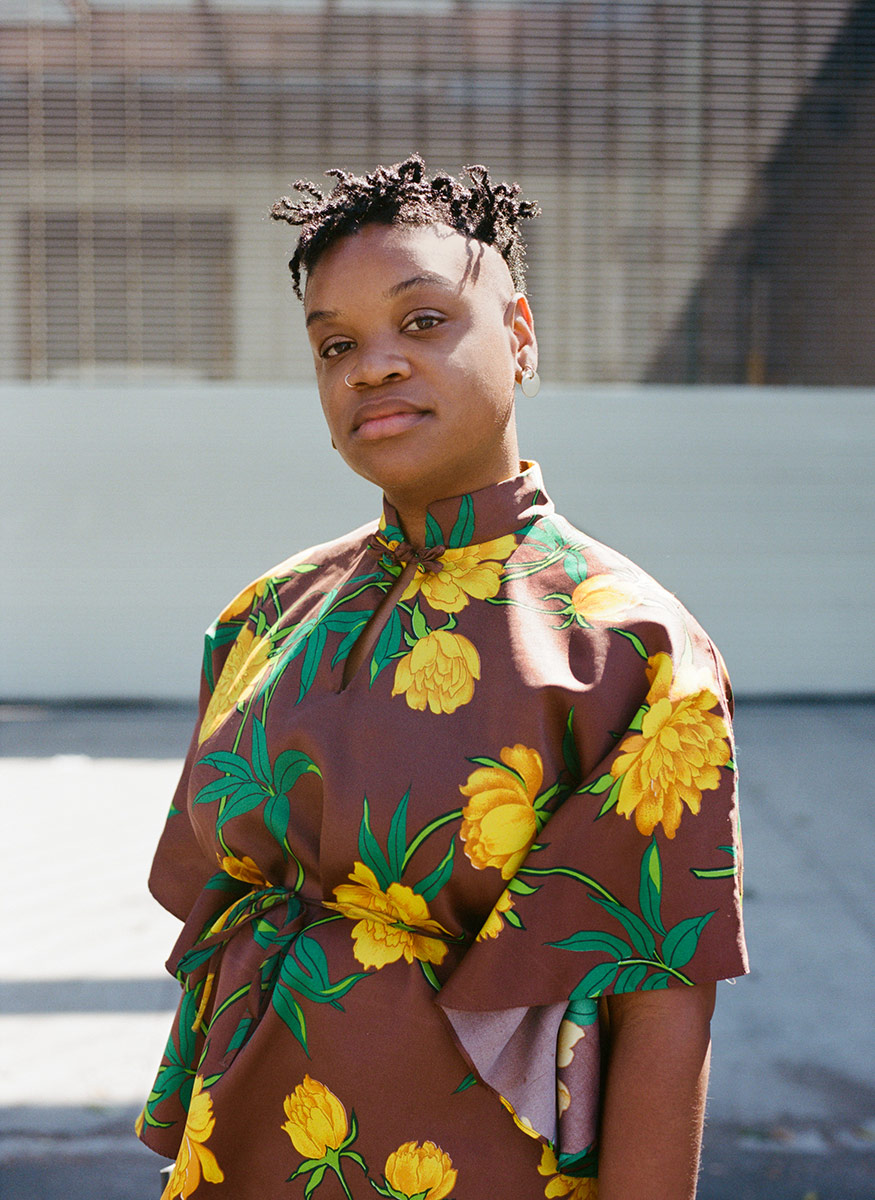
Museums are experiencing a cultural reckoning over race, identity and historical legacy. Black arts workers have been central in calling on museums to be more inclusive of the communities they serve.
Erin Christovale, associate curator at the Hammer Museum, focuses on experimental moving images and visual art. She has helped give emerging Black artists the structural support they need to advance their careers.
In an episode of the UCLA Arts podcast “Works In Progress,” Christovale talks about the changing role of the museum in the Black Lives Matter era. She’ll be exploring the question, “What is Justice?” as part of the UCLA event series “10 Questions: Reckoning” on Oct. 12, 2020.
Museums, like many public-facing institutions, were quick to express their solidarity with the Black Lives Matter movement following the murders this year of George Floyd, Breonna Taylor, Ahmaud Arbery, Tony McDade and countless other Black people.
But how can those expressions of support be substantiated with actions? And how can museums be more welcoming to visitors from underrepresented communities?
Christovale, like many Black arts workers, has been thinking carefully about those issues.
“In the past few years, major museums have actively hired curators of color, specifically Black curators,” Christovale said. “I think what museums really need to be thinking through right now is that, beyond just hiring us, how can you support us? And how might that support look and feel different than the traditional support that you’ve offered your curators?”
Christovale became interested in experimental media after taking a video art class as an undergraduate student at the USC School of Cinematic Arts.
After graduating, she and a few friends formed a collective called Native Thinghood to “make space for young artists of color in L.A., whether that be through creating exhibition space or making zines or having conversations.”
Christovale took the lead role in film programming for the collective. Her interest in experimental moving images led her in 2013 to co-found the short-film program Black Radical Imagination with a friend, Chicago-based filmmaker Amir George.
“This was such an important time for Black independent film and Black experimental media,” Christovale said, pointing to Issa Rae’s YouTube series “Awkward Black Girl” and Terence Nance’s debut feature film “An Oversimplification of Her Beauty.”
Black Radical Imagination organized hour-long programs of short films, with the first year’s works focused on the theme of Afrofuturism.
“The Black experience and depictions of Blackness in the film industry have always been complicated and layered. And so it just really felt important to witness, in this moment, a space in which Black creators were really carving space for their own,” she explained.
The series began in Los Angeles and Chicago but added screenings in Boston, Oakland, Philadelphia and Brooklyn and gained in popularity as it eventually traveled to Trinidad and Tobago; Guadalajara, Mexico; Basel, Switzerland; Toronto, Canada and elsewhere, providing a platform for Black experimental filmmakers.
The title was borrowed from Robin D.G. Kelley’s book “Freedom Dreams: The Black Radical Imagination,” about Black liberation movements in history.
“In each chapter, he makes sure to come back to this notion that if it weren’t for the imagination, if it weren’t for the mind and the mind’s capacity to think outside of oppression, that we wouldn’t be where we are now,” Christovale said. “I think for us, it was really important to adopt that philosophy in the cinematic realm.”
In 2016, Christovale curated an exhibition at the ONE National Gay & Lesbian Archives at the USC Libraries marking the 20th anniversary of “The Watermelon Woman,” the debut feature by queer filmmaker Cheryl Dunye. The exhibition displayed the romantic comedy-drama’s production archives while also highlighting new artists who were working within the same themes as the film.
The Hammer Museum invited Christovale to use that movie as a starting point for How to Love a Watermelon Woman, a film program she curated as part of the series In Real Life: Film & Video. That program featured a collective of Black women filmmakers, largely based on the East Coast, called the New Negress Film Society.
Christovale was then hired by the Hammer Museum and invited to curate, with Anne Ellegood, the Hammer’s biennial exhibition, “Made in L.A. 2018,” showcasing 32 artists from the greater Los Angeles area.
Growing up in Long Beach, Christovale said that curating Made in L.A. 2018 “felt extremely personal for me. I read this as my opportunity to write my love letter to my city.”

Ellegood and Christovale focused on themes such as development, gentrification, homelessness and multiculturalism, and how those forces were shaping L.A.’s structural and cultural landscape.
The exhibition brought in Latinx artists like Carolina Caycedo and Beatriz Cortez, as well as Black artists such as EJ Hill, Nikita Gale, taisha paggett and Lauren Halsey. These younger artists, Christovale said, were better prepared for public exposure than previous generations of Black artists who were left out of the mainstream art establishment.
“Something that I discovered consistently was that so many of these artists were just not equipped to have a studio visit or have their archive arranged, because they just never had that infrastructure and that support,” she said.